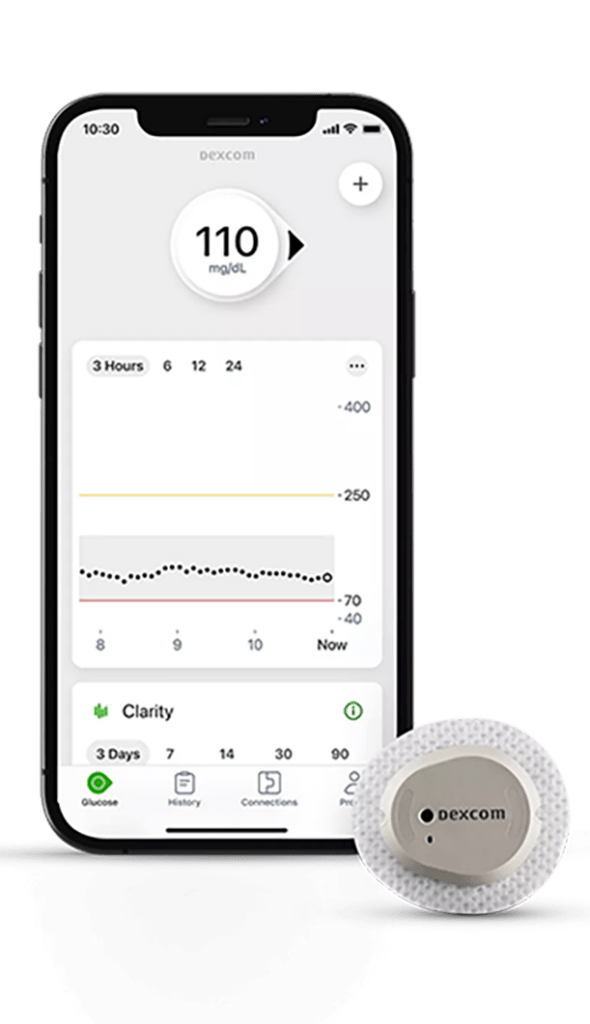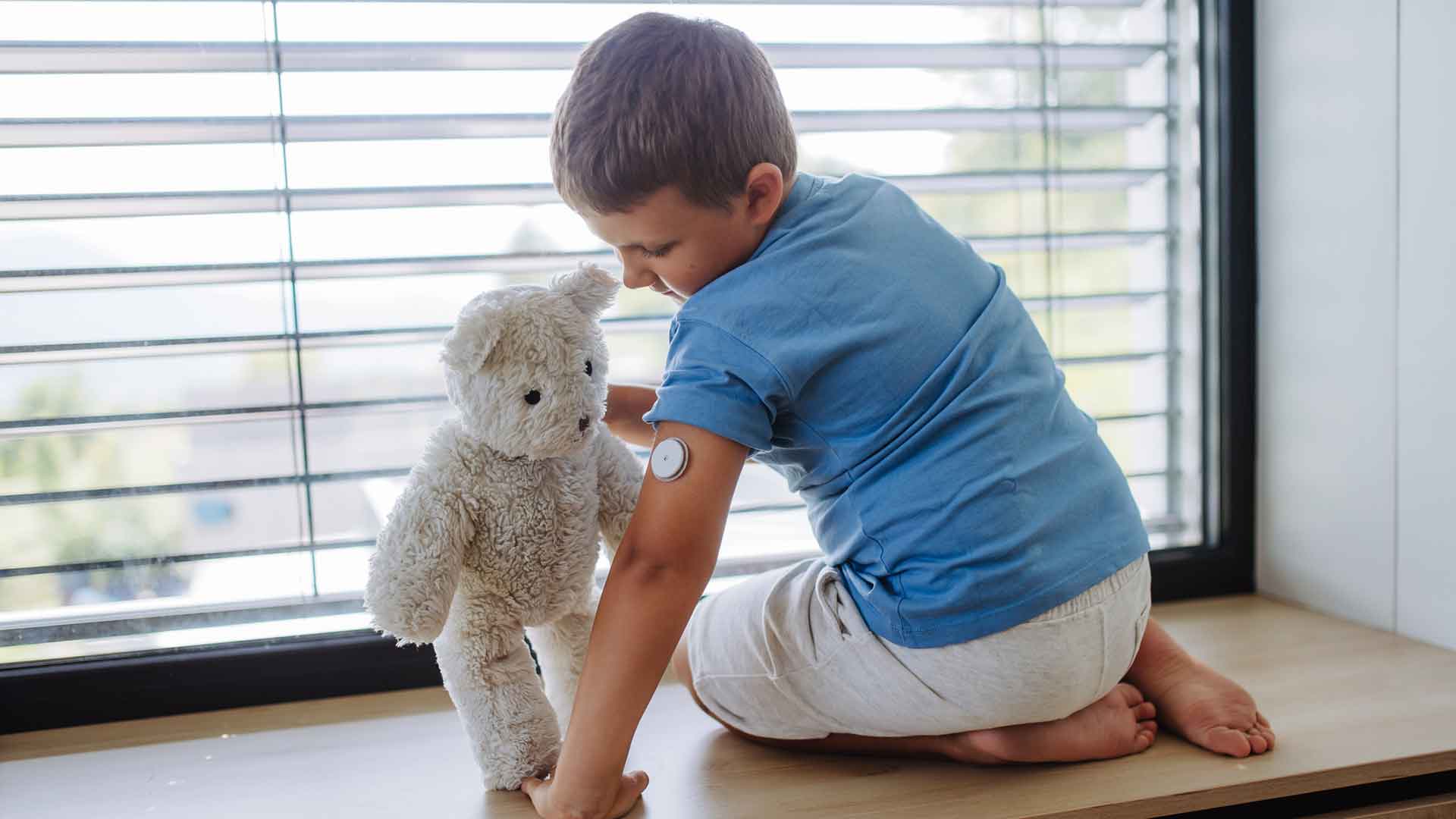If you or your child have type 1 diabetes, you know it can be challenging to manage, especially when it comes to monitoring blood sugar levels in children.
Luckily, there are Continuous Glucose Monitors (CGMs). These devices have revolutionized diabetes care by providing a more accurate and convenient way to monitor glucose levels. But there are so many options available in the market, that choosing the best CGM for your child can be overwhelming.
In this article, we’ll discuss some of the best CGMs available in the market and help you make an informed decision about which one could be the right fit for your child’s needs.
What are CGMs?
A Continuous Glucose Monitor (CGM) is a glucose tracking device that monitors a child’s glucose level in real-time and notifies when their glucose level is too high or too low. A CGM is essential for all type 1 diabetes patients because it can optimize glucose control.
A CGM device includes a small sensor that is inserted under the skin that continuously measures glucose levels. The sensor sends the data to a transmitter, which then sends the information wirelessly to a receiver (usually a smartphone app).
By tracking glucose levels throughout the day and night, CGMs can help people with diabetes make more informed decisions about their insulin doses, food choices, and physical activity levels.
CGMs are better at maintaining glycemic control because unlike the conventional glucose test, CGMs detect hypoglycemia and other undetectable glucose blood patterns and allows the parent or child to adjust the insulin therapy accordingly.
How Do CGMs Work?
To know how a CGM works, you need to understand what each of the device’s components does. A CGM has three components – sensor, transmitter, and receiver.
The sensor has a small filament carefully inserted subcutaneously to monitor the amount of glucose in the intestinal fluid.
The transmitter sends glucose readings wirelessly to the receiver. It’s usually attached to the sensor.
The receiver, the final component, shows the readings and provides instant notifications when glucose levels are at abnormal levels.
So how do CGMs measure sugar levels?
After insertion, the sensor takes a sugar reading every five to fifteen minutes, even at night. The data is sent to your receiver, which in most cases is your smartphone, via Bluetooth. From there, you can review the changes and adjust accordingly.
CGMs aren’t complicated to use, but the data it collects and transmits to the receiver can be a bit tricky to understand, especially if you’re new to CGMs. If you’re confused by all the data provided by the CGM, take a look at our simple CGM guide for parents to learn how to interpret it.
You can use the information provided by the CGM to make better decisions regarding your child’s diabetes.
How does a CGM and the Finger Pricking Test Differ?
A CGM is different from the finger pricking test or finger stick glucometer, although both provide valuable information about glucose levels and help better manage the condition. The significant difference between the two methods is how they measure BGL and their accuracy level.
Unlike CGMs, finger pricking uses a lancet, glucose test strips, and calibrated glucometer to measure blood sugar. Finger pricks are based on a blood sample to get a reading, while CGMs use interstitial fluid for the same effect.
In terms of accuracy, both give different readings and neither is 100% accurate. However, readings from CGMs lag behind the finger-pricking method with a median time of nine minutes. They also have different margins of error. CGMs have a margin of error of 9-15%, while finger pricking has a margin of error of 5.6 – 20%.
Possible reasons for the massive range in the accuracy of finger pricking are:
- Expired glucose test strips
- Damaged strips that have been exposed to light or air for a long time
- Poor calibration of the glucose meters
- Interference in the reading by certain substances on your hands
Given that both the CGM and finger-pricking methods vary greatly in accuracy, it’s recommended that you or your child use both methods, at different times. If using both, finger pricking can be used occasionally to calibrate the CGM, while the CGM readings are constant.
How Long Can A Child Wear a CGM?
The recommended time duration for wearing a CGM device depends on several factors, such as the type of CGM, the child’s tolerance to wearables, age, and lifestyle.
Some children can be uncomfortable wearing a CGM for long periods of time. Typically, most CGM devices are made to be worn for 7 – 14 days. Devices like the Dexcom G6 can be worn for 10 days before replacement.
Now, you may need to remove the CGM sensor before the time is up if certain circumstances occur. For instance, if the device is no longer functioning properly or if the child is experiencing skin irritation or any discomfort.
Parents or caregivers should be the ones to remove the device themselves if the child doesn’t know how. If you’re unsure of how to do this, ask your child’s doctor to give you some instructions on how to safely remove the device.
Best CGMs for Children
Now that you have a better understanding of how CGMs work, you might be wondering which CGM is best for your child.
These CGMs below are some of the best in the market in accuracy, performance, ease of use, durability, affordability, and accessibility.
Dexcom G6/G7
Dexcom is one of the best manufacturers of CGMs. No wonder its CGMs are arguably the most used in the United States. The Dexcom G6/G7 works like most CGMs – it transmits information to your smartphone, tablet, or smartwatch in real time from the sensor.
What sets them apart from other CGMs is their ability to complement other devices for diabetes management. We also like that the sensor transmits real-time data every five minutes. It’s the most accurate of all CGMs currently.

If you’re wondering if the G6 and G7 are the same, they aren’t. The G6 differs from the G7 in sensor size, calibration, wear time, and even compatibility. The G7 has a smaller sensor than the G6, which makes it more comfortable for kids to wear over a longer period.
Unlike the G6 which recommends two calibrations daily for more accurate results, the G7 doesn’t require any. The G7 also has a longer wear time (14 days) than the G6 (10 days.) Transmitter-wise, the G7 uses a new type of transmitter to make insertion easier and the device more comfortable to wear.
The compatibility aspect is where the G6 wins. It’s currently compatible with more devices, including both iOS and Android smartphones. This is mainly because the G6 is older. With our app Gluroo, you can easily connect the Dexcom G7 or G6.
Freestyle Libre 2/3
While Dexcom G6/G7 is more accurate than the FreeStyle Libre, the latter has the edge of giving multiple blood-free readings. The FreeStyle Libre uses a flash system, where you wave the accompanying monitor over the sensor to get your blood sugar reading.
The Libre system has two popular types – the Libre 2 and Libre 3. Both can be worn for up to 14 days before replacement. However, they differ in other aspects, such as sensor size and scanning requirements.

For example, the Libre 2 has a larger sensor than the Libre 3 but requires scanning the sensor with a different reader app to get glucose readings. The Libre 3, which became FDA-approved in 2022, doesn’t scan to transmit data to the smartphone or app.
The accuracy also differs, according to the manufacturer Abbott, with the FreeStyle Libre 3 being more accurate than the FreeStyle Libre 2. Overall, the Libre 3 is a better option for kids.
Eversense
If you want a sensor you can wear for a long time without changing it, the Eversense CGM is a good option. Manufactured by Senseonics, Eversense is implanted at the hospital subcutaneously and can be worn for up to 90 days.
Like some other CGMs, Eversense reports readings automatically every 5 minutes by measuring interstitial fluids. It also notifies you via an alarm if your blood sugar level falls out of range.

Some users have reported incorrect alerts when exposed to direct sunlight, so make sure your child avoids staying too long in the sun.
Pros And Cons of CGMs for Children
Using a CGM for your child has its pros and cons. Here are some of what we consider to be the most relevant pros and cons.
Pros of CGMs for Children
- No finger pricking: Finger pricking isn’t required. These benefits children who fear needles or don’t like the sight of blood.
- Continuous data collection: The device generates data even while your child is asleep. This provides greater insight into their glucose levels over time. You as the parent will be able to see changes in glucose level during periods when you’d normally be unable to check, like during the night.
- Alerts and alarms: Many CGMs provide customizable alerts and alarms to notify children and parents when glucose levels are out of range. This can help prevent hypoglycemia and hyperglycemia.
Cons of CGMs for Children
- Less affordable: CGM devices are more expensive than finger-pricking glucometers because they aren’t typically covered by many United States insurance plans.
- Accuracy: While CGMs are generally accurate, they may have some variability compared to traditional blood glucose monitoring, which can lead to errors in insulin dosing.
- Sensor placement: Some children may find it uncomfortable to wear a CGM sensor. Others might also experience skin irritation or allergic reactions at the site of insertion.
- Technical issues: CGMs are great but they’re not foul proof. They can sometimes have technical issues, such as connectivity problems or device malfunctions.
How Can I Get a CGM for My Child?
There are several CGM devices available in the market like we’ve already seen. You can get a CGM for your child by ordering one online directly from a manufacturer or a reputable supplier. But before you do that, you need to take certain steps.
- Consult with a health provider: First, you need to consult with a doctor to recommend the appropriate CGM for your child based on their needs and lifestyle. They’ll also be able to provide guidance on how to use the device. The doctor will also help in the setup, ensure the device is properly calibrated, and help you understand how to interpret the readings.
- Check insurance coverage: Additionally, you need to check insurance coverage. In the United States, CGMs aren’t covered by many insurance companies. Before you purchase the device, check with your insurance to see if the device is covered. This will help you avoid some extra costs.
How to Make Diabetes Management Even Simpler?
CGMs are great devices and have made diabetes management a lot easier, especially on children who aren’t able to monitor their blood glucose on their own or still struggle with pricking their fingers.
There are really great options of CGMs for children on the market and it’s just a question of which one is right for your family.
But as valuable as CGMs are, it’s important to carefully consider the potential benefits and drawbacks of using this device before deciding on whether or not to use it. It’s also important to work with a healthcare provider to ensure that the CGM is used effectively and safely.
If you’d like to further streamline your child’s diabetes management you might consider checking out our app, Gluroo.
Gluroo is one of the most comprehensive diabetes management apps available. It integrates with CGMs and insulin pumps, and lets you log meals, exercises, track open insulin vials, and much more. With Gluroo you can have all your diabetes data in one single place, in real-time, and available to multiple caretakers at once, wherever they may be located.
You can download Gluroo for free today!




